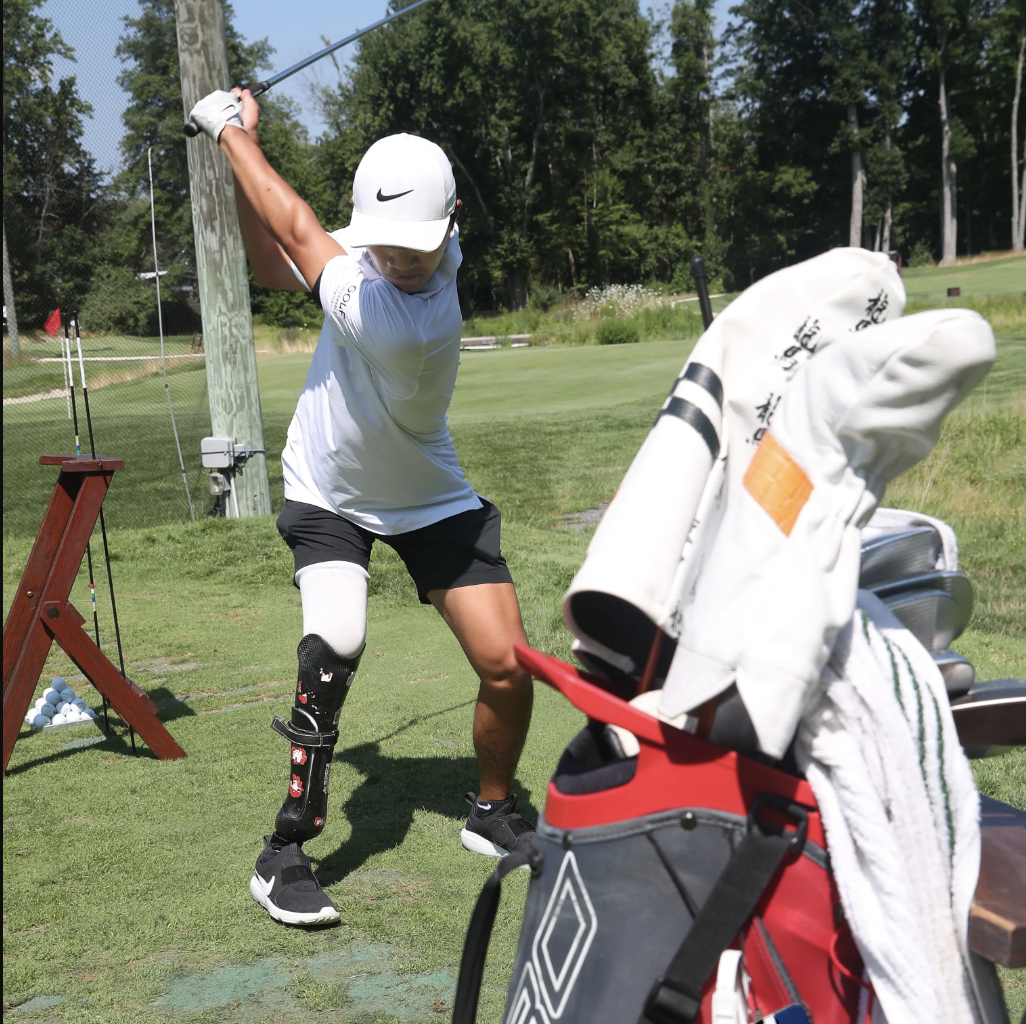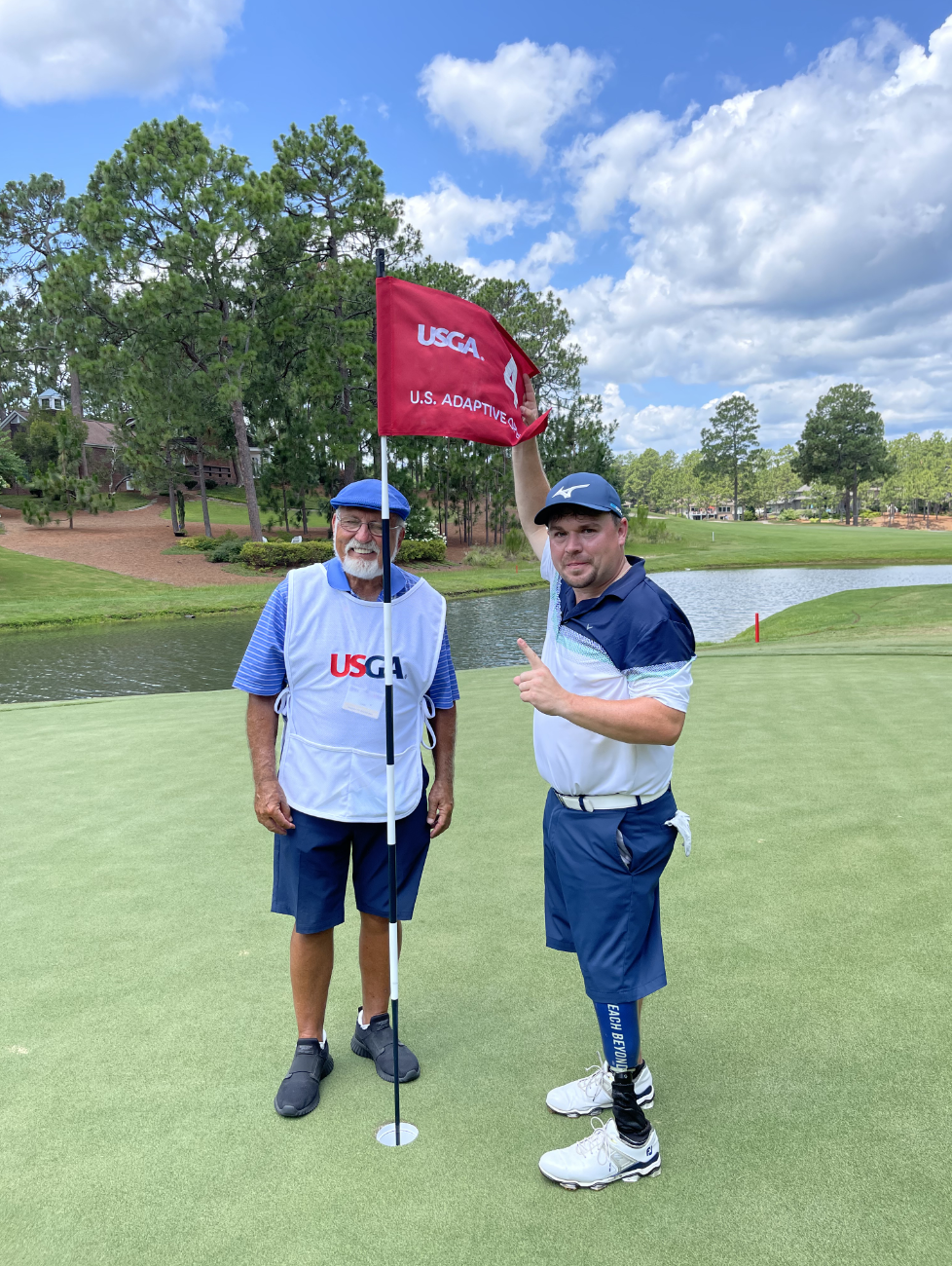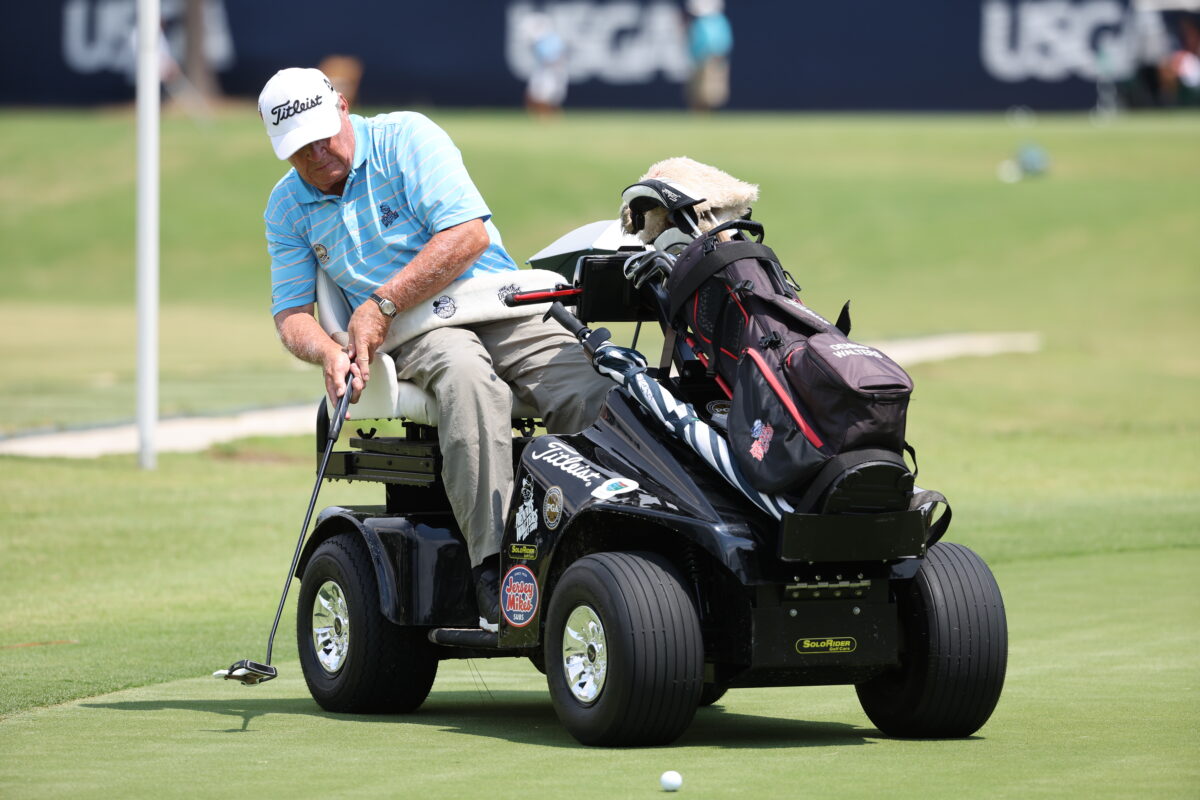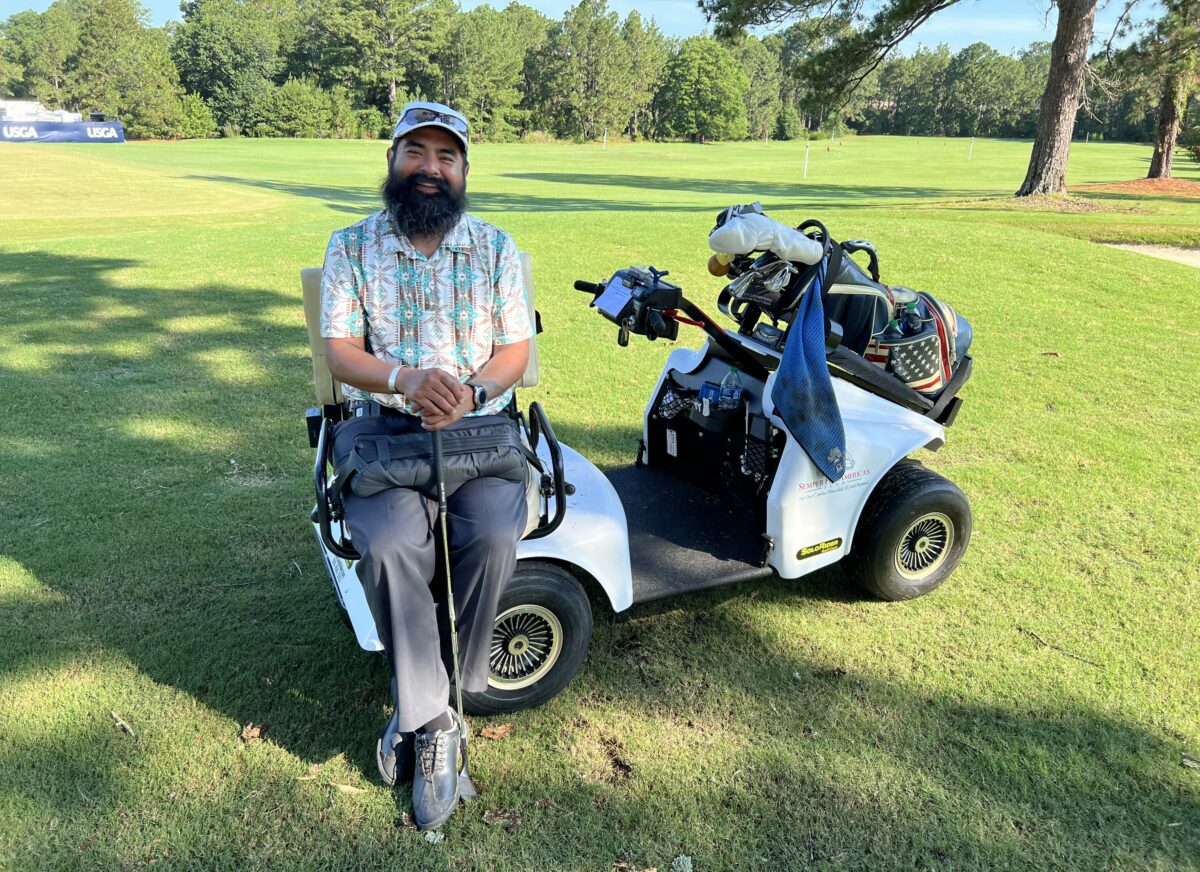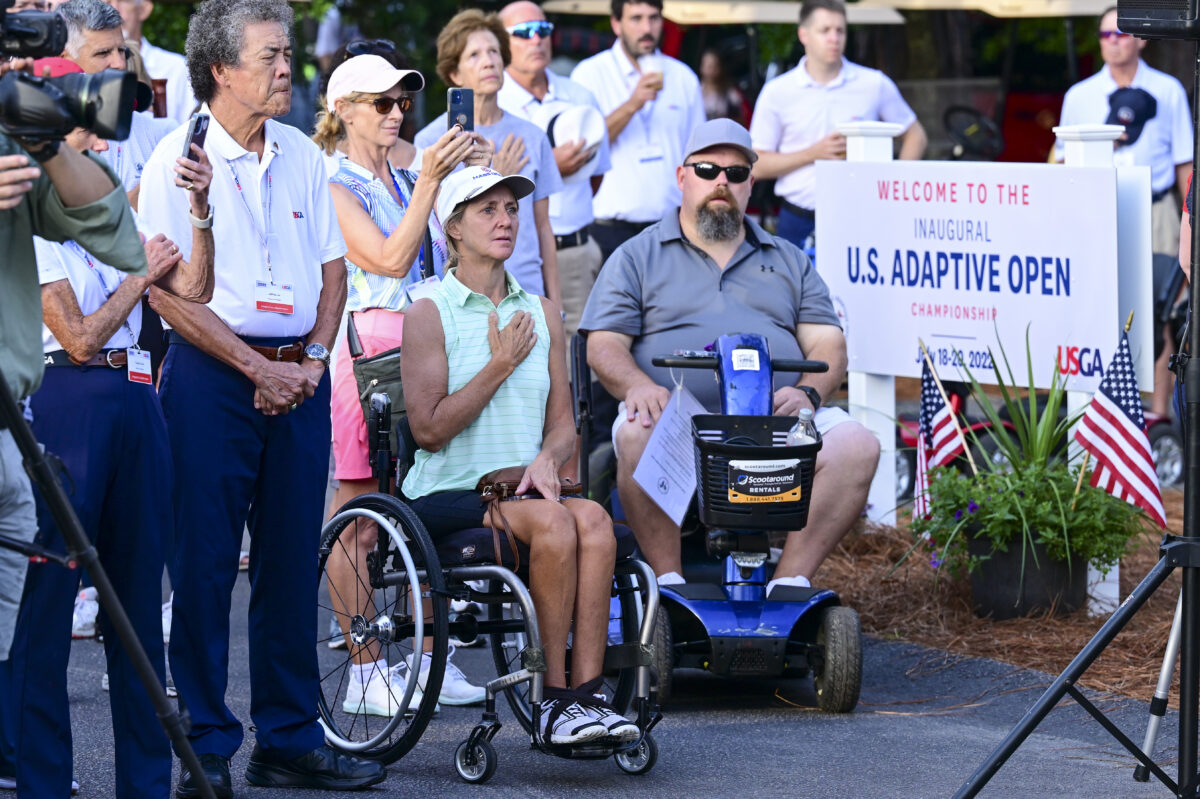RIDGEFIELD, Conn. – The swing is relatively quiet and strikingly efficient.
Golf balls were arcing skyward in succession last week, eventually disappearing over an imposing tree line on back side of the Golf Performance Center range some 250 yards away.
On the surface, it was an effortless performance.
The physical limitations Doug Shirakura instinctively works around each time he sets up over the ball are easily overlooked when the Somers, Connecticut, resident is in launch mode.
Nothing about the swing is awkward or mechanical.
“I think most people watch in disbelief, honestly,” said Roger Knick, a longtime PGA professional who is the owner and founder of Golf Performance Center. “They look at the way he controls the golf ball and quickly stop feeling sorry for him.”
Envy takes over when the sympathy fades.
Shirakura has been playing it as it lies his entire life. He is currently No. 1 among players with a single below-the-knee impairment by the U.S. Adaptive Golf Alliance. The junior aerospace engineering major at Worcester Polytechnic Institute carries a 1.2 index and finished tied for ninth last month at the inaugural U.S. Adaptive Open at historic Pinehurst No. 6.
He possesses an infectious enthusiasm for the game and is highly motivated to improve.
“If I’m being completely honest, playing with my restrictions is not difficult at all,” the 20-year-old said while tuning up for this week’s Eastern Regional Amputee Championship at Penn State. “I mean, this is all I’ve ever known. In that sense, I definitely have an advantage over some of the older guys who may have lost their limbs later in life.”
Shirakura was an infant when his right leg was amputated below the knee, the result of amniotic banding syndrome.
“It mostly affects outer extremities,” he said. “My right hand was kind of fused together. My fingers didn’t form well, so I had to have multiple surgeries when I was a baby to reconstruct my hand. My right foot was almost to a point where it was unusable. It was either I keep the foot and kind of take a gamble or amputate it and use the prosthetic.
“That’s what my parents went with, and it’s worked out great.”
Aki and Miyuki Shirakura both played golf and introduced their son early on. He also played a number of sports growing up, but none of those competitive outlets sparked his imagination.
Mom halted a blossoming karate career when prosthetics began to break.
So that left golf, and Shirakura was all in by middle school.
“I did the junior camp at Centennial every summer until I got too old,” he said. “I’d get dropped off at like 7 a.m. When you’re young, it doesn’t feel like a long day. You practice in the morning, go out and play nine holes, play games on the putting green with some friends and go out and play again. The next thing you know, it’s starting to get dark and your mom is there.”
Keeping up with peers was never an issue.
“I never felt disadvantaged against the field, I was just trying to go out there and play,” added Shirakura, whose drives typically measure in excess of 270 yards.
Eventually, he graduated to Met PGA Junior Tour and Hurricane Junior Golf Tour events. He was also captain of the golf team at Somers and competed in a number of national adaptive golf tournaments. Results at that point were mixed.
“I wasn’t that good of a golfer – not because of my disabilities,” Shirakura said. “It wasn’t until COVID, that I began to improve. That’s when I started coming here. I realized I was lacking distance, partially because of my disability, I didn’t have the strength on the right side, but also because I was a skinny kid in high school. I knew that if I wanted to be competitive, I needed to gain more distance, I needed to play smarter and I needed to constantly practice what I can control instead of what I can’t control.”
Access to year-round practice at the high-end facility was transformative.
“By and large, we haven’t done a lot as far as instruction or coaching,” Knick said. “It’s really about providing an environment where he’s able to thrive by coming in and working diligently. He’s gone through our assessment to understand where his skills are and where he is physically, and he hasn’t shied away from any challenge.”
Winning adaptive tournaments is not the end game.
Shirakura is aiming to keep up with golfing buddies like Ardsley resident Brent Ito, who played collegiately at Michigan and now has status on PGA Tour Canada.
“In my opinion he is just an extraordinary young man who has faced the challenge of his circumstance with absolute belief that he can overcome anything, so it’s pretty easy to coach that,” Knick added.
His golf idols are people like Carlos Brown and Ken Green.
“Carlos is a teaching pro in Dallas who unfortunately lost his left leg below the knee after an accident,” Shirakura said. “He’s been critical in keeping me on the right track to playing better golf and keeping me on the right track mentally in life. Ken Green was the first really good adaptive golfer that I met and I was like, ‘Holy Cow, he played on the PGA Tour.’ ”
They first crossed paths when the Danbury, Connecticut native who lost part of his leg in an RV accident was back in the area playing an event at Richter Park. They reconnected at Pinehurst.
“A lot of people in adaptive golf are my role models,” Shirakura added. “They all have such amazing stories. I’m always telling myself, ‘Those guys have it way worse than you, so get your … together.’ ”
After following Brown on social media, Shirakura reached out to the highly-regarded PGA teaching professional four years ago. They are kindred golf nerds. Brown provided some needed focus and was able to make needed swing adjustments virtually.
The results were almost immediate.
Shirkura deals with the inevitable uneven lies with careful thought and committed execution. And knowing his margin for error is small, everything is well-rehearsed.
“Douglas is somebody I use as an example for my college players,” Brown said. “He’s a late bloomer. A couple years ago, he was still figuring out what he wanted to do with golf. I told Douglas, ‘It has to be function and form over fashion.’ You need to figure out how you’re supposed to move based on what we’re dealt. You can’t fit yourself into a mold that doesn’t look like you and he’s beginning to trust that. … Because he had so much information from people, he was struggling to put it together and had kind of a Frankenstein-looking swing. He was gifted, but had a lot of pieces that didn’t fit who he was.
“And the other thing is he will outwork anybody.”
The opportunity to play in the U.S. Adaptive Open was lifechanging.
Shirakura put together rounds of 75, 77 and 79 on Course No. 6 at Pinehurst, which played some 6,500 yards. He finished 15 over for the championship.
“The conditions were fantastic and they made the course play really difficult,” he said. “They did it that way because it’s meant to be a U.S. Open. It’s supposed to test all our skills and I think they did a fantastic job of achieving that.”
Shirakura walked the first two rounds, noting that his use of a cart would be disrespectful to competitors dealing with more severe mobility issues. He did take a cart in the final round after his mom expressed concern about the relentless heat.
“Going into the event, I had some pretty high expectations, knowing the history of the USGA,” he said. “And when I got there, I was completely blown away. … It was amazing to be out there and be able to reach a lot of people. … My goal, especially in golf, is to inspire people. Having a big stage set by the USGA, was just a huge deal. All of the players were kind of given a platform to share their inspiring stories and how they were able to overcome their situations through golf.”
There are many more elevated greens to climb.
“I have no idea where this is going,” Shirakura said. “For the next three years, I’m going to be trying to get better and see how far I can take my game and see if I can reach my full potential. I’m fortunate enough to have this opportunity to be able to play and practice at a facility like this and I have the time to really put in this game. It would be a waste not to see how far I could get.”
Regardless of result, he’s providing inspiration with each swing.
“It’s about learning to adapt, literally,” added Brown, who was quick to add Shirakura to the Nike Adaptive Team he oversees. “The cool thing is, that’s something we do in life. That’s all golf is, regardless of difference, you have to adjust to situations that present themselves. We just have to adjust a little bit more.”
Mike Dougherty covers golf for The Journal News and lohud.com. He can be reached at mdougher@lohud.com or on Twitter @lohudgolf.
[vertical-gallery id=778285152]
[mm-video type=playlist id=01es6rjnsp3c84zkm6 player_id=01evcfxp4q8949fs1e image=https://golfweek.usatoday.com/wp-content/plugins/mm-video/images/playlist-icon.png]


